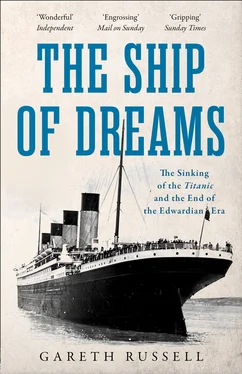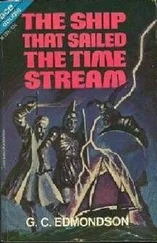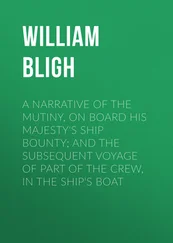With their tasks accomplished, Andrews said a temporary farewell to colleagues, like Edward Wilding, whose work on Titanic ended in Southampton, and his secretary, Thompson Hamilton, who was travelling back to Belfast to handle any correspondence during Andrews’ absence. ‘Remember now,’ Andrews told Hamilton, with that second word ubiquitous to an Ulster dialect, ‘and keep Mrs Andrews informed of any news of the vessel.’[10] From the deck, Andrews could see other ships, moored together in greater numbers than usual. The British Miners’ Federation had voted to end a six-week strike only four days earlier and the impact on an industry as dependent on coal as shipping had been temporarily significant – many smaller liners had their voyages rescheduled to facilitate coal being reallocated for the on-time departures of the leviathans.[11] The red-, white- and blue-capped funnels of the American Line’s St Louis , Philadelphia and New York were moored next to White Star’s Majestic and Oceanic . After twenty-two years at sea, the Majestic had been withdrawn from regular service and designated a reserve ship, while the Philadelphia and New York were about to have their first-class quarters removed entirely for an increase of second- and third-class, as the drift of first-class clientele to larger, more modern ships had rendered them superfluous.[12] For Andrews, the most significant of the slumbering ships in the harbour was White Star’s former flagship, the Oceanic , berthed alongside the New York . After working his way up from his post-school apprenticeship at Harland and Wolff, Andrews had first been given charge of a design for the White Star Line in the late 1890s, helping to produce the Oceanic , praised then and later as a ‘ship of outstanding elegance both inside and out’.[13] The Oceanic was still in service in April 1912, but shipbuilding’s technological strides in the thirteen years since her debut had left that pretty ship far behind; the Titanic was nearly three times heavier than Andrews’ first ship, with room for almost twice as many passengers and crew.
Far below, the process of boarding the third-class passengers began shortly after the crew’s muster was completed. Since many in Third Class travelled as emigrating families, there were usually more children, necessitating a longer boarding process, combined with the delay-inducing medical inspections required by American immigration authorities.[14] Those on the dock that day were a few hundred of the 23,000 immigrants who would sail on White Star ships to America over the course of 1912–13.[15] Although it was, and is, often used to describe this collective, the word ‘steerage’ did not apply to those in Titanic ’s Third Class. The noun sprang from the earlier days of mass migration to the United States and it could still in 1912 apply to the cheaper class of accommodation offered by other, often less prestigious travel companies, but there was an appreciable difference. Hamburg-Amerika’s soon to be launched Imperator would provide four classes of travel, delineating Third and Steerage as two different sections of the ship.[16] To qualify as steerage, there had to be communal dormitories, something that the Titanic did not offer. Every third-class passenger was in a cabin, albeit with bunk beds and, if travelling on their own, typically shared with others of their own gender. The White Star Line had a reputation for offering the best third-class accommodation then available, with the result that tickets on the Titanic or the Olympic could cost as much as Second Class on other liners.[17] Thus a contemporary travel guide could confidently assert that the White Star Line carried ‘a better class of emigrant’.[18]
Nonetheless, following a cholera epidemic among immigrants at the German port of Hamburg twenty years earlier, the United States had introduced firm policies on who could be admitted at Ellis Island.[19] This meant that all third-class passengers had to undergo medical examinations at embarkation and that there could be no contact between them and the two more expensive classes, because if there was, those passengers would also have to be inspected before leaving the ship in New York.[20] For first- and second-class passengers this meant that barring any glances from their promenade decks down to the outdoor areas at the stern for Third Class, boarding was likely to be the only time they had a sustained opportunity to see third-class passengers. Even leaving aside the quarantine issues set by the American government, contemporary travel guides insisted that it was the height of bad manners for a first-class passenger to play the tourist by asking to see the third-class public rooms during the voyage: ‘it cannot be urged too strongly that it is a gross breach of the etiquette of the sea life, and a shocking exhibition of bad manners and low inquisitiveness, for passengers to visit unasked the quarters of an inferior class … the third-class passengers would be within their rights in objecting to their presence … they expect to have the privileges and privacy of their quarters respected also.’[21]
Unlike passengers who could afford to cross the ocean annually or travel far and wide for their holidays, a third-class ticket was usually a one-way experience, a fact which produced particularly heartrending scenes on the dock. While viewing the boarding process of another of the ‘floating palaces’ in 1912, the contemporary travel writer R. A. Fletcher asked one of the crew for the reasons behind a much longer embarkation window for Third Class, which the latter explained had something to do with how often immigrants ran back across the gangplank to embrace loved ones who had come to wave them off. ‘It’s a nuisance, you know,’ the crew member remarked,
when you want to be off, but after all its [ sic ] human nature and you can’t blame them. If I were a woman I’d be as bad myself. You see, it comes harder to a married woman to pull up stakes and to make a new home in a new country than it does to a man or children. A man makes a new home and the children grow up in new surroundings and become accustomed to them; but God help most of the mothers. They go for the sake of husbands and children, but they leave their hearts behind them, in another sense, as often as not.[22]
For the Countess of Rothes, the purpose of her transatlantic jaunt was also for the sake of her husband, albeit in happier and less permanent circumstances. The Earl had been in the United States since February, when he had sailed from Liverpool on the Lusitania , to go on a fact-finding mission, comparing the efficiency of the privately operated American telegraph system with that of its publicly owned British equivalent. After his work was finished, Norman took the opportunity to tour and he had invited Noëlle to join him in the United States to celebrate their twelfth wedding anniversary with a visit that would culminate with a stay in a rented cottage on an orange grove in Pasadena, California, one of the properties Norman was allegedly interested in purchasing.[23]
Trading the inconsistent loveliness of an English spring for the beautiful monotony of California’s had not presented Lady Rothes with an easy task when it came to packing. She had been piecing together a new wardrobe for her American sojourn up until the day before she left London, including a last-minute dash to Zyrot et Cie, a milliner’s near her townhouse on Hanover Square, where she picked out some new hats and motoring veils.[24] Most of those would go into one of the two steamer trunks that Noëlle would not need during the voyage, slumbering in the cavernous chill of the hold until they reached Manhattan. London was wrapped in its own brand of unseasonable frigidity with the result that most of Noëlle’s fellow passengers had boarded the train that morning wearing top coats and hats.[25]
Читать дальше












